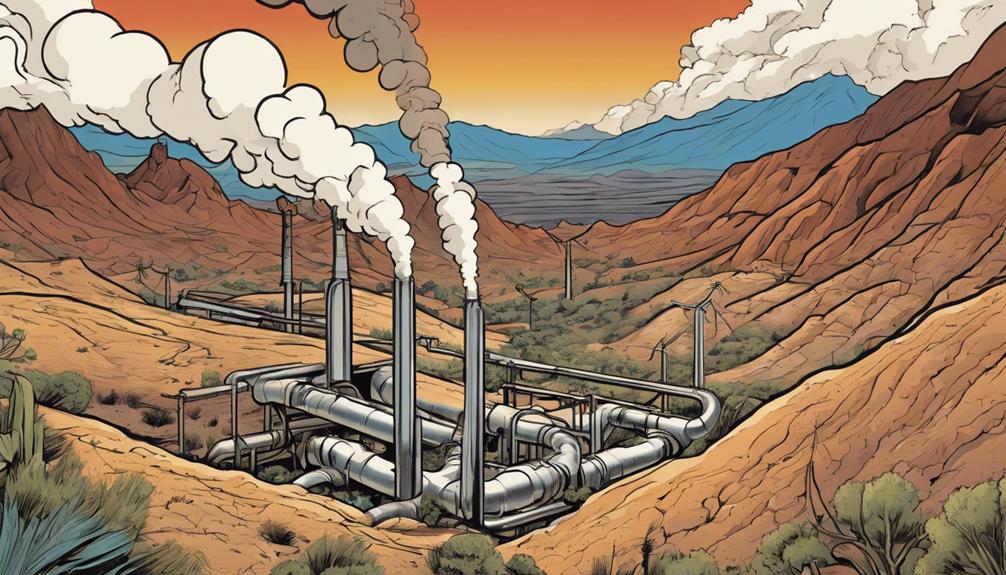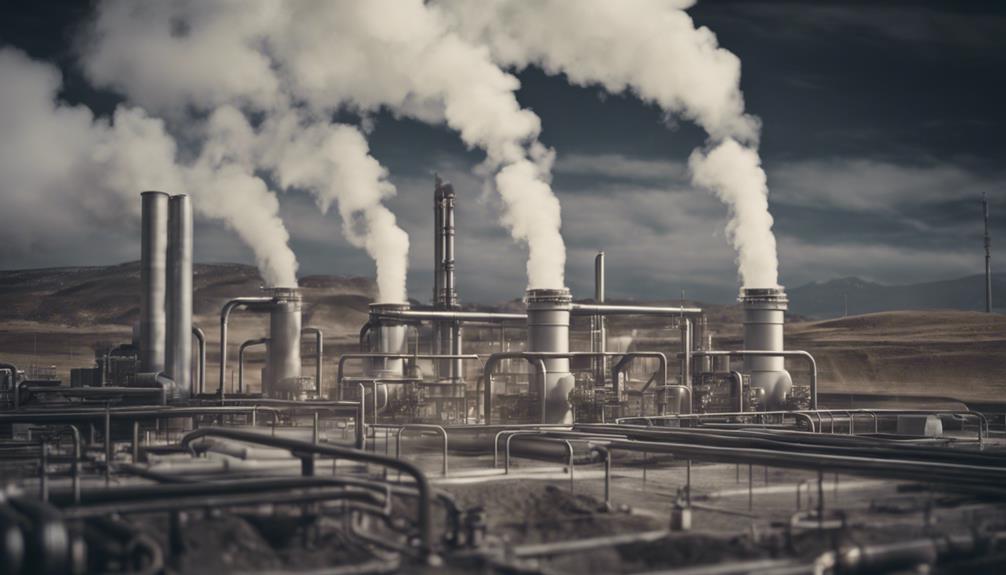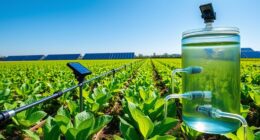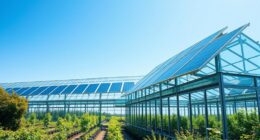When it comes to wind turbines, I've learned that ideal wind speed is the key to maximizing their complete capacity. Even slight deviations from the perfect speed range can lead to notable losses in energy production and turbine longevity. To maximize efficiency, turbines need to operate within a specific wind speed range. By fine-tuning turbines to respond to changing wind speeds, energy production can be optimized. But that's not all – there are other vital factors at play. Stay with me to discover how maintenance, rotor diameter, turbine alignment, and minimizing turbulence effects all come together to guarantee excellent turbine performance.
Key Takeaways
- Accurate wind speed measurement is crucial for enhancing turbine efficiency and power output.
- Identifying optimal wind speed ranges ensures top turbine performance and maximum energy production.
- Fine-tuning turbines based on accurate wind speed assessment ensures optimal performance and minimizes energy losses.
- Analyzing wind speed data helps in maximizing energy production and identifying areas for improvement.
- Optimal wind speed assessment is essential for designing and operating wind turbines efficiently.
Wind Speed Measurement and Assessment
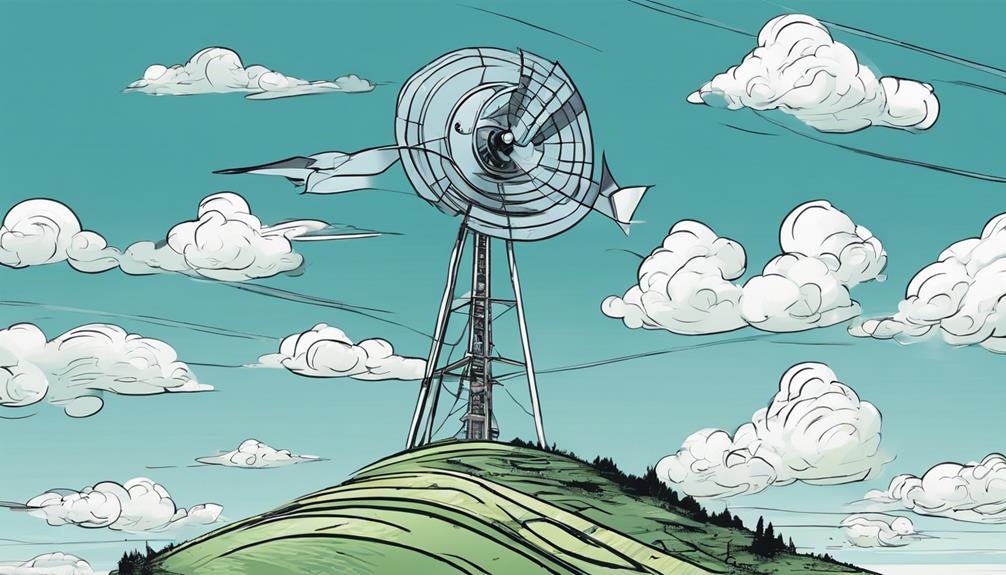
To maximize wind turbine performance, I rely on precise wind speed measurement and assessment. This involves using techniques like cup anemometers to determine the exact wind speed and its variability. This data is essential for enhancing turbine efficiency and power output.
I need to know when the wind speed is within the best range of 8-55 miles per hour, and when it's below the cut-in speed of around 6-9 miles per hour. By analyzing wind speed data, I can identify patterns and trends that help me determine the most effective ways to maximize energy production.
With accurate wind speed measurement and assessment, I can fine-tune my turbines to capture the most energy possible, ensuring top performance and revenue generation.
Maintenance for Optimal Performance

I balance the importance of ideal wind speeds with the need for regular upkeep to guarantee my turbines operate at peak performance and generate maximum energy revenue. Neglecting maintenance can lead to decreased efficiency and turbine failure, which is why I make it a priority.
Here are the essential maintenance tasks I focus on:
- Blade inspection and cleaning: Removing dirt and debris ensures top aerodynamic performance.
- Gearbox and generator maintenance: Regular checks and repairs prevent mechanical failures.
- Turbine design and temperature control: Optimized design and temperature management maximize performance and lifespan.
- Scheduled component replacement: Proactive replacement of worn parts ensures consistent energy generation.
Rotor Diameter and Wind Capture

Larger rotor sizes significantly boost wind capture effectiveness, enabling my turbines to harness more energy from the wind.
A larger sweep area means I can tap into more wind, resulting in increased power output and energy production. This is particularly advantageous in low wind speeds, where every bit of energy matters.
By maximizing wind capture, I can enhance my turbine's performance and overall efficiency. It's not just about size, though – optimal rotor size is essential for extracting the highest percentage of wind energy possible.
With the right design, I can minimize energy losses and maximize my return on investment. By getting this crucial component right, I can guarantee my turbines are operating at their peak.
Aligning Turbines With Wind Direction

As I optimize my turbine's performance, I need to take into account the wind direction to maximize the returns on my investment. Wind direction plays an essential role in determining the efficiency of my turbine. Misaligning my turbine with the prevailing wind direction can lead to reduced energy generation and increased wear and tear on the components.
Here are some key considerations to keep in mind:
- prevailing wind direction: Identifying the direction from which the wind blows most frequently.
- turbine alignment: Ensuring my turbine is aligned with the prevailing wind direction.
- wind shear: Accounting for changes in wind speed and direction at different heights.
- wake effects: Minimizing interference between turbines to optimize energy generation.
Minimizing Turbulence Effects

Turbulence greatly influences my turbine's power generation, so I need to minimize its effects to optimize energy production and reduce wear on components. Turbulence introduces variability in wind speed and direction, leading to reduced energy capture efficiency and increased fatigue loads on turbine components. To mitigate these effects, I must carefully consider turbine design and placement.
| Turbulence Effects | Mitigation Strategies |
|---|---|
| Reduced energy capture | Optimize turbine design for low turbulence |
| Increased fatigue loads | Strengthen turbine components |
| Structural vibrations | Implement vibration damping systems |
| Noise levels | Use sound-absorbing materials |
| Component failure | Regular maintenance and inspection |
Frequently Asked Questions
How Does Air Density Affect Wind Turbine Performance?
'When I think about air density, I realize it greatly impacts wind turbine performance. Higher air density means more mass flowing through the turbine, increasing power output, while lower density reduces it.'
Can Wind Turbines Operate Efficiently in Extreme Temperatures?
I'd say wind turbines can operate efficiently in extreme temperatures, but it's essential to guarantee proper maintenance, temperature control, and design considerations to minimize performance degradation and maximize energy output.
What Is the Ideal Hub Height for Wind Turbines?
Honestly, I'd say the ideal hub height for wind turbines is around 80-100 meters, allowing turbines to capture more consistent and stronger winds, thereby boosting energy production and overall efficiency.
How Do Birds and Wildlife Impact Wind Turbine Performance?
I've noticed that birds and wildlife can impact wind turbine performance by colliding with blades, causing damage and downtime, while also influencing turbine placement and operation to minimize environmental harm.
Can Wind Turbines Be Used in Urban Environments?
I think wind turbines can be used in urban environments, but it's challenging due to turbulence, noise, and space constraints. Installing smaller, quieter turbines or vertical-axis designs might make urban wind energy more feasible.
How does Oil Maintenance Affect the Performance of Wind Turbines in Relation to Wind Speed?
Optimal oil maintenance for wind turbines is crucial for maximizing their performance in relation to wind speed. Proper maintenance ensures that the turbine’s components run smoothly and efficiently, allowing it to harness the maximum power from the wind. Without regular oil maintenance, the turbine’s performance can be significantly compromised.
Conclusion
As I wrap up this exploration of best wind speed, I'm left wondering: what's the true potential of wind energy if we can perfect the delicate dance between turbine and breeze?
By grasping the intricacies of wind speed, we can reveal the secrets to maximum power output and minimize waste.
It's clear that best wind speed is the key to turbine performance – and with it, a cleaner, greener future.





